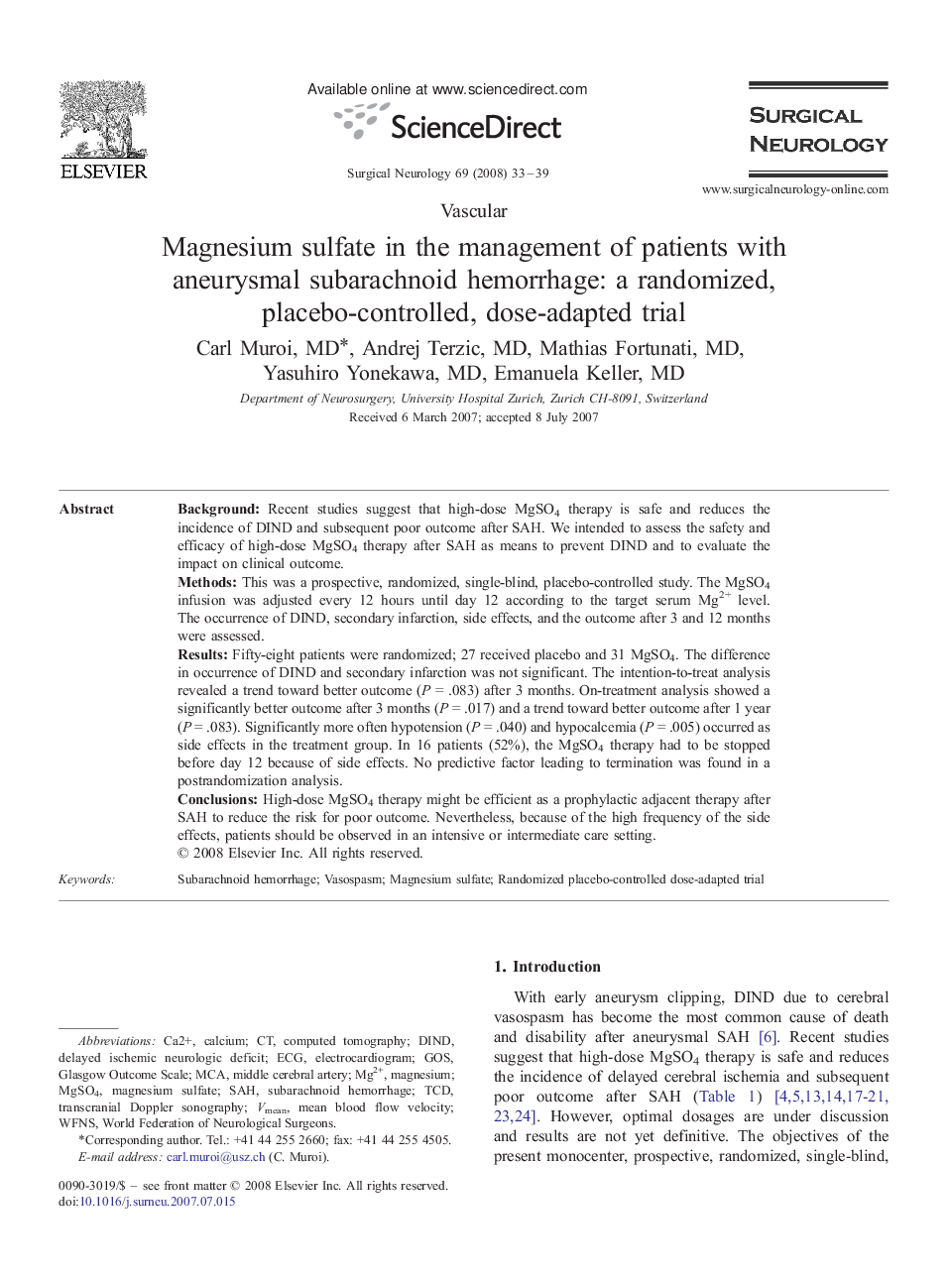| Article ID | Journal | Published Year | Pages | File Type |
|---|---|---|---|---|
| 3093086 | Surgical Neurology | 2008 | 7 Pages |
BackgroundRecent studies suggest that high-dose MgSO4 therapy is safe and reduces the incidence of DIND and subsequent poor outcome after SAH. We intended to assess the safety and efficacy of high-dose MgSO4 therapy after SAH as means to prevent DIND and to evaluate the impact on clinical outcome.MethodsThis was a prospective, randomized, single-blind, placebo-controlled study. The MgSO4 infusion was adjusted every 12 hours until day 12 according to the target serum Mg2+ level. The occurrence of DIND, secondary infarction, side effects, and the outcome after 3 and 12 months were assessed.ResultsFifty-eight patients were randomized; 27 received placebo and 31 MgSO4. The difference in occurrence of DIND and secondary infarction was not significant. The intention-to-treat analysis revealed a trend toward better outcome (P = .083) after 3 months. On-treatment analysis showed a significantly better outcome after 3 months (P = .017) and a trend toward better outcome after 1 year (P = .083). Significantly more often hypotension (P = .040) and hypocalcemia (P = .005) occurred as side effects in the treatment group. In 16 patients (52%), the MgSO4 therapy had to be stopped before day 12 because of side effects. No predictive factor leading to termination was found in a postrandomization analysis.ConclusionsHigh-dose MgSO4 therapy might be efficient as a prophylactic adjacent therapy after SAH to reduce the risk for poor outcome. Nevertheless, because of the high frequency of the side effects, patients should be observed in an intensive or intermediate care setting.
